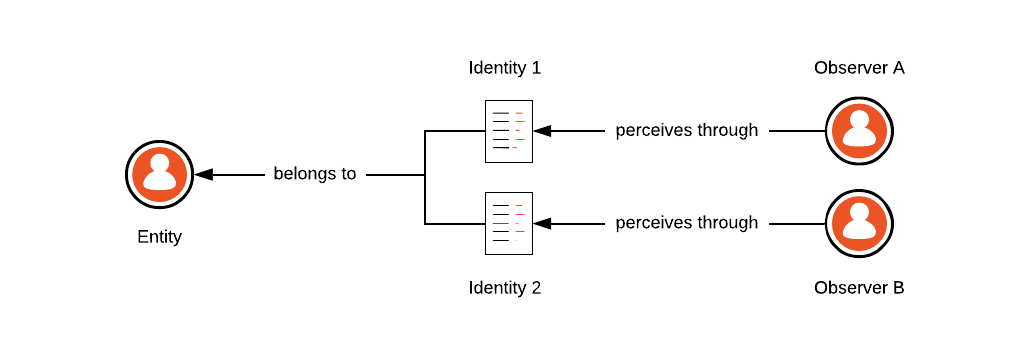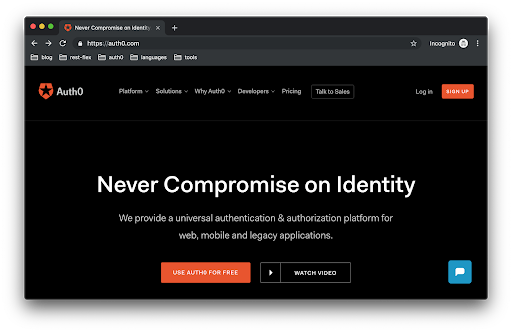TL;DR: In August 2019, Auth0 published an ebook called The OpenID Connect Handbook to help developers leverage this modern identity layer to provide an easy and secure authentication mechanism to their users. This ebook covers all the main concepts that you must know to integrate your app with OpenID Connect providers. If you are in a hurry and would like to dive right into the content of the ebook, click the link below to get your free copy.
Learn about the de facto standard for handling authentication in the modern world.
Download the free ebook
The rest of this article will summarize the content of the ebook so you can take a glimpse of what you will learn about on the ebook.
“The OpenID Connect Handbook teaches you everything you need to handle end-user authentication securely.”
Tweet This
The Contents of the OpenID Connect Handbook
As of October 2019, the handbook covers six main areas related to OpenID Connect. Each area has a chapter of its own that is subdivided into other sections to help you understand OpenID Connect, how this identity layer was born, and how to use it to secure your applications:
- Introduction
- OpenID Connect Introduction
- OpenID Connect in Action
- OpenID Connect and Traditional Web Applications
- Traditional Web Apps and the Delegated Authorization Flow
- OpenID Connect and Single-Page Applications
The following sections will cover each one of these chapters separately, so you can learn what to expect on them. Hopefully, if you are looking to learn about a topic in particular, you will be able to download the free ebook and dive right into it.
Introduction
The Introduction chapter of this handbook disserts about topics that are not part of OpenID Connect per se, but that are important for you to grasp before you start learning about it. In this chapter, you will learn about the terms Entity and Identity and you will learn about how they are interconnected. There, you will learn that an entity has multiple identities and that people, or other entities, perceive entities through their identities.
After that, you will learn about the terms Authentication and Authorization. More specifically, you will learn how these terms are related, how one thing can lead to another, and how they differ. Authentication vs. Authorization is an important topic that causes great confusion, even on members of the IT workforce around the world.
OpenID Connect Introduction
After learning about the conceptual topics that preamble this ebook, you will start learning about OpenID Connect. This chapter will begin by guiding you through a ten-thousand-foot overview of how an OpenID Connect authentication transaction works. After that, you will briefly read about other authentication mechanisms and how the IT community went from simple usernames and passwords, to Kerberos, to SAML, and OpenID Connect.
The chapter will then move into more details about the OpenID Connect specification and will talk about OAuth 2.0, the underlying technology that the identity layer builds on top. In the end, you will read about some OpenID Connect use cases so you can learn when this technology can be helpful.
OpenID Connect in Action
The next chapter on the ebook, called OpenID Connect in Action, will start to teach you the inner workings of the OpenID Connect specification. There, you will set up an OpenID Connect provider that you will use through the hands-on exercises, and you will prepare your local environment to run the samples that you will learn about. As the goal of the ebook is to show, step by step, how you can secure your applications with OpenID Connect, the exercises will use the most popular programming language in the world (i.e., JavaScript) to lower the barrier.
OpenID Connect and Traditional Web Applications
Having created your OpenID Connect provider and prepared your local development environment, the next chapter will be the first hands-on activity of the ebook. However, besides being a hands-on activity, the chapter will also teach about important topics such as the authentication flows. You will find a few other useful resources on the internet that inform you about OpenID Connect. The main problem with them, which this ebook aims at solving, is that they introduce a lot of theory before giving you anything you can use.
In this ebook, you will see that you will learn about the abstract parts of OpenID Connect on the fly. That is, instead of investing time to learn about all the different authentication flows that OpenID Connect supports and about all the abstract terms involved in them, this ebook will briefly teach you about them, then it will use these concepts right away.
For example, after you read about what an authentication flow is, you will jump right into using one. Besides that, you will read and learn how to use Discovery Endpoints, an prominent piece of OpenID Connect providers, right away. You will also learn about other important topics in this chapter like the Authentication Callback and user profiles.
Traditional Web Apps and the Delegated Authorization Flow
After you learn about how OpenID Connect securely promotes end-user authentication, the ebook will continue by teaching you about one of the most prominent scenarios where OpenID Connect and OAuth 2.0 are used: on delegated authorization. The chapter will show you all you need to know about this kind of authorization but, basically speaking, delegate authorization is when you let an app act on your behalf. The example that you will read about everywhere, including in this ebook, is when a third-party application wants to help you schedule tweets. In this scenario, this third-party app will have to ask you for permission to tweet on your behalf on the date and time you configure it. When this app issues a request to Twitter to create the tweet, the app will be acting on your behalf.
OpenID Connect and Single-Page Applications
The last chapter of the handbook (so far, because we will publish more chapters soon) talks about how to secure Single-Page Applications with OpenID Connect. In the modern internet, most popular apps (and those that are not popular also) are using this approach to promote a better user experience to their customers. Therefore, it wouldn't make sense to have an ebook that does not cover the most popular paradigm when it comes to web development.
In this chapter, you will learn about terms like PKCE (Proof of Key for Code Exchange) while integrating a single-page app with your OpenID Connect provider. Besides that, you will also take a look at a popular alternative called the Implicit Grant and why this approach is not encouraged anymore. As SPAs are usually hosted as static files in a cloud provider, you will also use delegated authorization in this chapter. That is, you will have an API that contains data that belong to users and you will make the SPA ask users permission to consume this API on their behalf.
Conclusion
As you can see, if you are interested in learning about OpenID Connect and how this technology can help you secure your applications, you came to the right place. In this ebook, you will learn everything you need to make your apps behave as OpenID Connect clients and how to make them consume APIs on their users behalf. Another interesting thing that you will learn in this handbook is about how popular and official SDKs (like the ones supported by Auth0) can help you be more efficient. That is, the ebook will show you everything you need to code in any application to make it integrate with an OpenID Connect provider, but it will also show you a more straightforward way to achieve your goals. With this, you will have both the tools to debug any misconfiguration and to be as focused as possible on what makes your app unique.
If you need help with any matter related to the OpenID Connect Handbook or to identity, authentication, and authorization, let us know in the comment box below.
“OpenID Connect is an easy and powerful tool you can use to secure your applications.”
Tweet This
About Auth0
Auth0 by Okta takes a modern approach to customer identity and enables organizations to provide secure access to any application, for any user. Auth0 is a highly customizable platform that is as simple as development teams want, and as flexible as they need. Safeguarding billions of login transactions each month, Auth0 delivers convenience, privacy, and security so customers can focus on innovation. For more information, visit https://auth0.com.
About the author

Bruno Krebs
R&D Content Architect (Auth0 Alumni)






